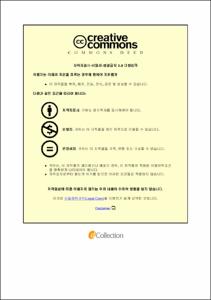국내산 김, 다시마, 미역, 톳의 생산지역에 따른 미네랄 함량 분석 및 영양평가
- Alternative Title
- The Minerals Analysis and Nutritional Evaluation according to Production Area Laver, Japanese kelp, Sea mustard, Hijiki in Korea(Porphyra tenera, Saccharina japonicus, Undaria pinnatifida, Sargassum fusiforme)
- Abstract
- The purpose of this study was to analyze the nutritional components and to evaluate nutritional value of seaweeds: laver (Porphyra tenera), Japanese kelp (Saccharina japonicus), sea mustard (Undaria pinnatifida) and hijiki (Sargassum fusiforme). Proximate composition, fatty acid composition, total amino acid and mineral contents were measured.
There was no significantly difference in the proximate composition of the laver, Japanese kelp, sea mustard and hijiki produced in different regions of Korea. Moisture contents were ranged from 85.34 g/100 g to 92.68 g/100 g and crude protein contents were ranged from 0.05 g/100 g to 0.45 g/100 g. Crude lipid contents were ranged from 1.20 g/100 g to 5.14 g/100 g.
As a result of investigation of fatty acid composition of laver, Japanese kelp, sea mustard and hijiki by production area, the content of saturated fatty acids was mainly palmitic acid (C16:0) and that of monounsaturated fatty acids was oleic acid (C18:1). In polyunsaturated fatty acids, linoleic acid (C18:2), arachidonic acid (C20:4) and eicosapentaenoic acid (C20:5) were the major components of laver, and brown algae like Japanese kelp, sea mustard, hijiki were mainly composed of stearidonic acid (C18:4), arachidonic acid (C20:4), and eicosapentaenoic acid (C20:5).
Total amino acids were analyzed for 17 amino acids except tryptophan. Among the amino acids, leucine, aspartic acid, glutamic acid and alanine appeared high contents in the analyzed samples. Among them, the content of glutamic acid was the highest. The contents of total amino acids produced in different regions of Korea were laver 24.66-25.71 g/100 g, Japanese kelp 9.63-11.16 g/100 g, sea mustard 12.36-17.96 g/100 g and hijiki 9.93-10.21 g/100 g. The total amino acid content of laver was highest and the amino acid content of each sample produced in different regions of Korea was not different.
As a result of mineral contents in four Korean seaweeds produced in different regions, macro minerals content was highest in K (462.82-2,066.65 mg/100 g), followed by Na (123.61-360.76 mg/100 g), Ca (18.00-131.29 mg/100 g), Mg (28.10-61.43 mg/100 g) and P (28.10-61.43 mg/100 g). The contents of micro mineral per 100 g were the highest in I (0.23-94.82 mg), followed by Fe (0.46-3.59 mg), Zn (0.14-0.93 mg) and Cu (0.00-0.07 mg), and Se and Mo were detected in trace amounts.
In order to evaluate nutritional assessment of mineral intake of laver, Japanese kelp, sea mustard and hijiki, the maximum and minimum mineral intakes were calculated and nutrient uptake ratios were calculated in comparison with the Korean nutritional intake standard.
Nutrient uptake proportion of mineral intakes was (in descending order): K (157.29±222.74%), Na (75.06±85.83%), Mg (62.19±71.54%), Ca (39.43±47.81%), P (26.11±28.51%), I (141,284.39±348,022.06%), Fe (69.48±98.09%), Zn (14.95±20.85%), Cu (6.58±7.54%). Japanese kelp showed high nutrient uptake rate in most minerals.
To consume mineral usefully, it was judged that healthy diet based on the recommend and adequate nutrient intake should be maintain. Also, through this study, it was expected to utilize as base data in order to secure a nutritional excellence and to establish a standard of intake laver, Japanese kelp, sea mustard and hijiki of Korea.
- Issued Date
- 2017
- Awarded Date
- 2017. 2
- Type
- Dissertation
- Publisher
- 부경대학교 대학원
- Affiliation
- 부경대학교 대학원
- Department
- 대학원 식품공학과
- Advisor
- 조영제
- Table Of Contents
- 서 론 1
재료 및 방법 4
1. 실험재료 4
1. 1. 국내 주요 소비 해조류 4
2. 실험방법 4
2. 1. 일반성분 함량 측정 4
2. 2. 지방산 조성비 측정 5
2. 3. 총 아미노산 함량 측정 5
2. 4. 미네랄 함량 측정 5
2. 4. 1. 전처리 방법 5
2. 4. 2. 요오드 분석법 6
2. 4. 3. 기기분석 6
2. 4. 3. 회수율측정 6
2. 5. 통계처리 6
3. 미네랄 섭취량 및 영양평가 8
결과 및 고찰 9
1. 생산지역에 따른 해조류의 영양성분 분석 9
1. 1. 일반성분 함량 9
1. 2. 지방산조성 함량 15
1. 3. 총 아미노산 함량 21
1. 4. 미네랄 함량 27
2. 생산지역에 따른 해조류의 미네랄 섭취량 및 영양평가 35
2. 1. 미네랄 섭취량 35
2. 2. 미네랄 섭취량에 대한 영양평가 38
요 약 50
참고문헌 52
감사의 글 58
- Degree
- Master
- Files in This Item:
-
-
Download
 국내산 김, 다시마, 미역, 톳의 생산지역에 따른 미네랄 함량 분석 및 영양평가.pdf
기타 데이터 / 1.38 MB / Adobe PDF
국내산 김, 다시마, 미역, 톳의 생산지역에 따른 미네랄 함량 분석 및 영양평가.pdf
기타 데이터 / 1.38 MB / Adobe PDF
-
Items in Repository are protected by copyright, with all rights reserved, unless otherwise indicated.